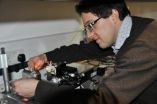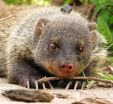Study shows that human hearts generate new cells after birth
Findings on heart muscle growth could lead to novel approaches for treating heart failure in children
2013-01-10
(Press-News.org) Boston, Mass. — Researchers at Boston Children's Hospital have found, for the first time that young humans (infants, children and adolescents) are capable of generating new heart muscle cells. These findings refute the long-held belief that the human heart grows after birth exclusively by enlargement of existing cells, and raise the possibility that scientists could stimulate production of new cells to repair injured hearts.
Findings of the study, "Cardiomyocyte proliferation contributes to post-natal heart growth in young humans," were published in Proceedings of the National Academy of Sciences, Online Early Edition, the week of Jan 7-Jan 11, 2013. The study was led by Bernhard Kühn, MD, of the Department of Cardiology at Boston Children's.
Beginning in 2009, Dr. Kühn and his team looked at specimens from healthy human hearts, ranging in age from 0 to 59 years. Using several laboratory assays, they documented that cells in these hearts were still dividing after birth, significantly expanding the heart cell population. The cells regenerated at their highest rates during infancy. Regeneration declined after infancy, rose during the adolescent growth spurt, and continued up until around age 20.
The findings offer the strongest evidence to date that proliferation of cardiomyocytes (the cells making up heart muscle) contributes to growth in healthy young human hearts.
"For more than 100 years," Kühn says, "people have been debating whether human heart muscle cells are generated after birth or whether they simply grow larger." Kühn points out that research in the 1930s and 1940s suggested that cardiomyocyte division may continue after birth, and recent reports about myocardial regeneration in zebrafish and neonatal mice suggest that some young animals regenerate heart muscle by using mechanisms of muscle cell division. Still, for many years, the accepted belief in the scientific community was that human hearts grow after birth only because cells grow larger.
Kühn's work challenges the accepted wisdom and offers hope for new treatments for heart failure. Babies and children may be able to increase heart muscle cell proliferation and regenerate damaged parts of their heart muscle. In addition, the study points to new research directions by suggesting that abnormal cardiomyocyte proliferation may be involved in diseases of the heart muscle (cardiomyopathy) that affect young humans, and that cardiomyocyte proliferation could be stimulated in young humans for the treatment of heart failure.
The findings, according to Kühn, help to create a "cellular blueprint for how the human heart grows after birth." Using this blueprint, treatment strategies could be developed to treat heart failure in children
###
The study received institutional funding from the Department of Cardiology and the Translational Investigator Program (Boston Children's Hospital) and outside funding from the Children's Cardiomyopathy and Geneen Foundations, the Biomedical Research Exchange Program and the Helmut-Drexler Foundation and the American Heart Association.
Mariya Mollova, MD, and Kevin Bersell were first co-authors on the paper.
Boston Children's Hospital is home to the world's largest research enterprise based at a pediatric medical center, where its discoveries have benefited both children and adults since 1869. More than 1,100 scientists, including nine members of the National Academy of Sciences, 11 members of the Institute of Medicine and 12 members of the Howard Hughes Medical Institute comprise Boston Children's research community. Founded as a 20-bed hospital for children, Boston Children's today is a 395-bed comprehensive center for pediatric and adolescent health care grounded in the values of excellence in patient care and sensitivity to the complex needs and diversity of children and families. Boston Children's also is a teaching affiliate of Harvard Medical School. For more information about research and clinical innovation at Boston Children's, visit: http://vectorblog.org/. END
ELSE PRESS RELEASES FROM THIS DATE:
2013-01-10
Scientists observed that blocking the expression of the gene TRIP-Br2 in mice protects them against obesity and insulin resistance. The study shows that the gene modulates fat storage by regulating energy expenditure and lipolysis, the process which transforms fat into lipids for the body's energy consumption. If the gene expression is blocked, the mice increase their lipolysis and their energy expenditure, thus reducing their obesity.
Obesity is the result of an alteration in the processes that regulate food absorption and energy production. This alteration tips the ...
2013-01-10
This new infrared image from ESO's VISTA telescope shows the globular cluster 47 Tucanae in striking detail. This cluster contains millions of stars, and there are many nestled at its core that are exotic and display unusual properties. Studying objects within clusters like 47 Tucanae may help us to understand how these oddballs form and interact. This image is very sharp and deep due to the size, sensitivity, and location of VISTA, which is sited at ESO's Paranal Observatory in Chile.
Globular clusters are vast, spherical clouds of old stars bound together by gravity. ...
2013-01-10
Research at the University of Edinburgh tracked electrical signals in the part of the brain linked to spatial awareness.
The study could help us understand how, if we know a room, we can go into it with our eyes shut and find our way around. This is closely related to the way we map out how to get from one place to another
Scientists found that brain cells, which code location through increases in electrical activity, do not do so by talking directly to each other. Instead, they can only send each other signals through cells that are known to reduce electrical activity.
This ...
2013-01-10
Royal Holloway is among a select group of top universities to receive £21.5 million in government funding to explore commercial uses for graphene.
Announced by the Chancellor of the Exchequer, George Osborne just after Christmas, the funding will focus attention on the so-called 'super-material' graphene, one of the thinnest, strongest and most conductive materials known to man.
The project at Royal Holloway will focus on using graphene to develop new equipment that can operate at high frequencies. This could include devices useful for security purposes, which can ...
2013-01-10
Southampton researchers have demonstrated that mothers who have higher levels of n-6 polyunsaturated fatty acids (PUFAs), which are found in cooking oils and nuts, during pregnancy have fatter children.
The study, carried out by the Medical Research Council (MRC) Lifecourse Epidemiology Unit, University of Southampton, assessed the fat and muscle mass of 293 boys and girls at four and six years, who are part of the Southampton Women's Survey (SWS), a large prospective mother-offspring cohort.
Their assessments were compared to the concentrations of PUFAs which were ...
2013-01-10
The University of Southampton's Optoelectronics Research Centre (ORC) is pioneering research into developing the strongest silica nanofibres in the world.
Globally the quest has been on to find ultrahigh strength composites, leading ORC scientists to investigate light, ultrahigh strength nanowires that are not compromised by defects. Historically, carbon nanotubes were the strongest material available, but high strengths could only be measured in very short samples just a few microns long, providing little practical value.
Now research by ORC Principal Research Fellow ...
2013-01-10
One of the most difficult problems in the field of genomics is assembling relatively short "reads" of DNA into complete chromosomes. In a new paper published in Proceedings of the National Academy of Sciences an interdisciplinary group of genome and computer scientists has solved this problem, creating an algorithm that can rapidly create "virtual chromosomes" with no prior information about how the genome is organized.
The powerful DNA sequencing methods developed about 15 years ago, known as next generation sequencing (NGS) technologies, create thousands of short fragments. ...
2013-01-10
Could marriage, and associated companionship, be one key to a longer life? According to new research, not having a permanent partner, or spouse, during midlife is linked to a higher risk of premature death during those midlife years. The work, by Dr. Ilene Siegler and colleagues from Duke University Medical Center in the US, is published online in Springer's journal Annals of Behavioral Medicine.
Survival through middle age to become elderly is expected; therefore understanding who does not survive to become elderly and why is important. Siegler and colleagues looked ...
2013-01-10
This press release is available in German.
Animals are more eloquent than previously assumed. Even the monosyllabic call of the banded mongoose is structured and thus comparable with the vowel and consonant system of human speech. Behavioral biologists from the University of Zurich have thus become the first to demonstrate that animals communicate with even smaller sound units than syllables.
When humans speak, they structure individual syllables with the aid of vowels and consonants. Due to their anatomy, animals can only produce a limited number of distinguishable ...
2013-01-10
The Mathematical Sciences in 2025, a new report from the National Research Council, finds that the mathematical sciences are an increasingly integral component of many disciplines -- including biology, medicine, the social sciences, business, advanced design, and climate studies. However, the expanding role of the mathematical sciences over the past 15 years has not been matched by a comparable increase in federal funding, and the number of federal agencies that provide significant support for this research is considerably smaller than the number that profit from it.
The ...
LAST 30 PRESS RELEASES:
[Press-News.org] Study shows that human hearts generate new cells after birth
Findings on heart muscle growth could lead to novel approaches for treating heart failure in children

